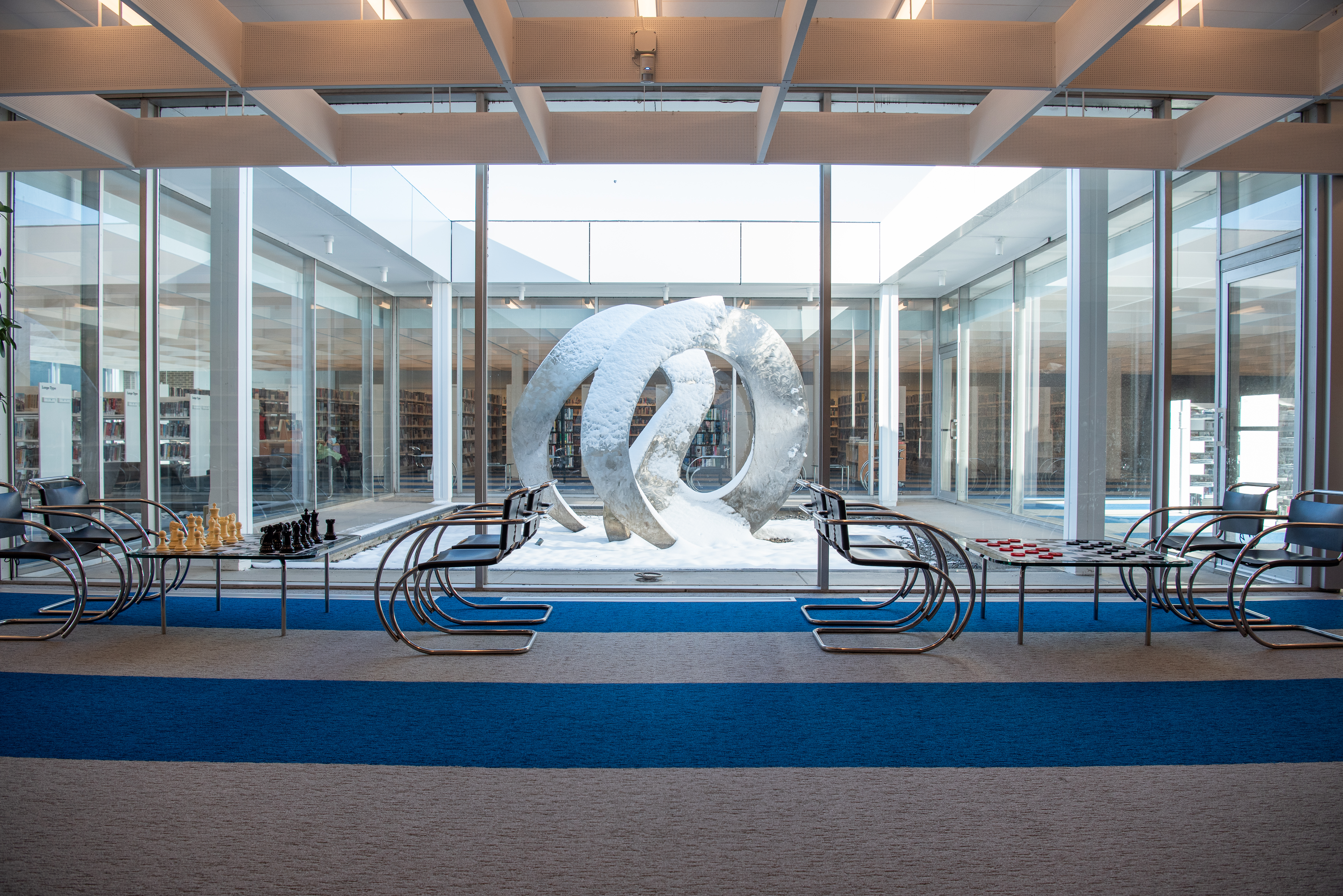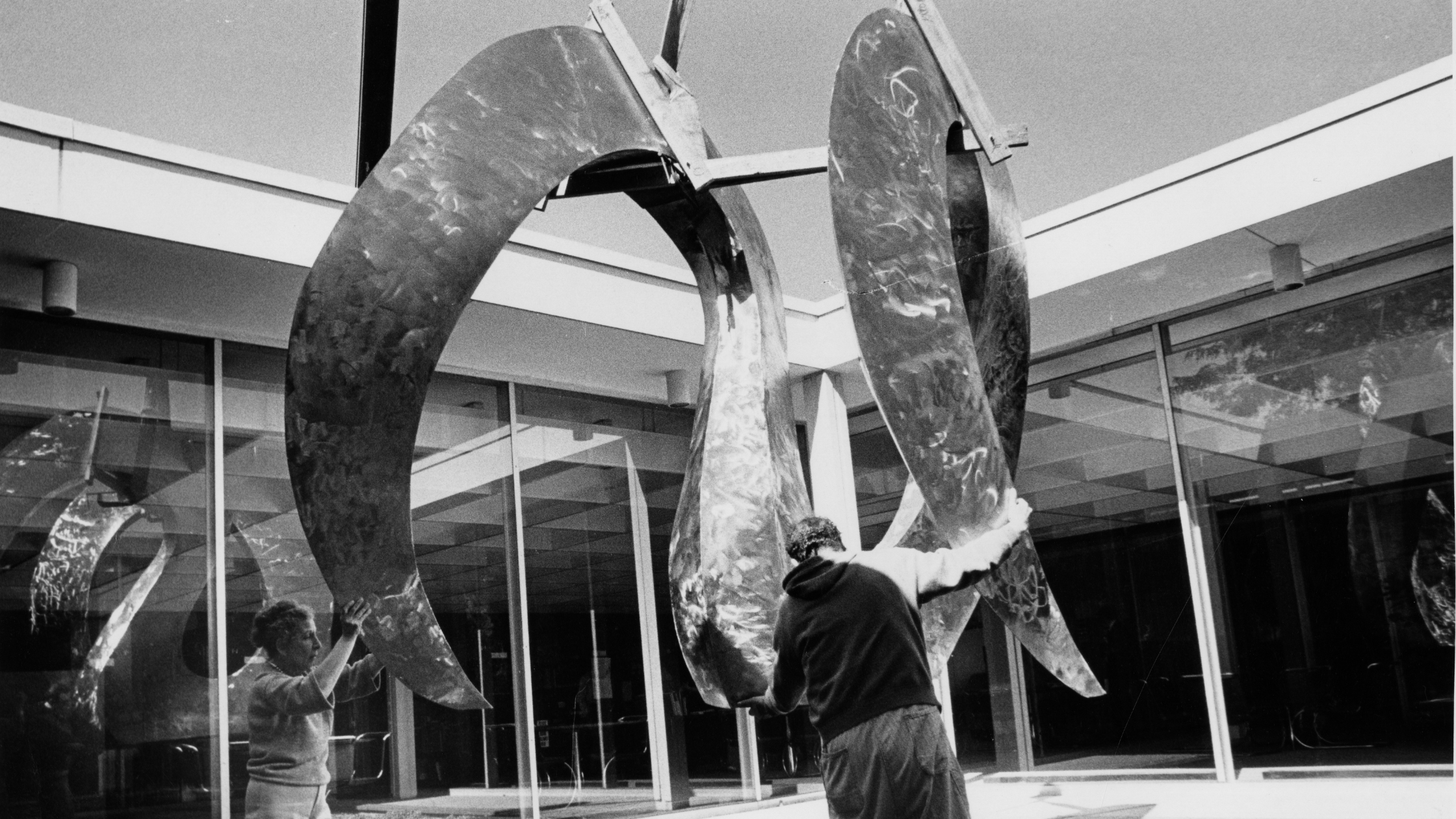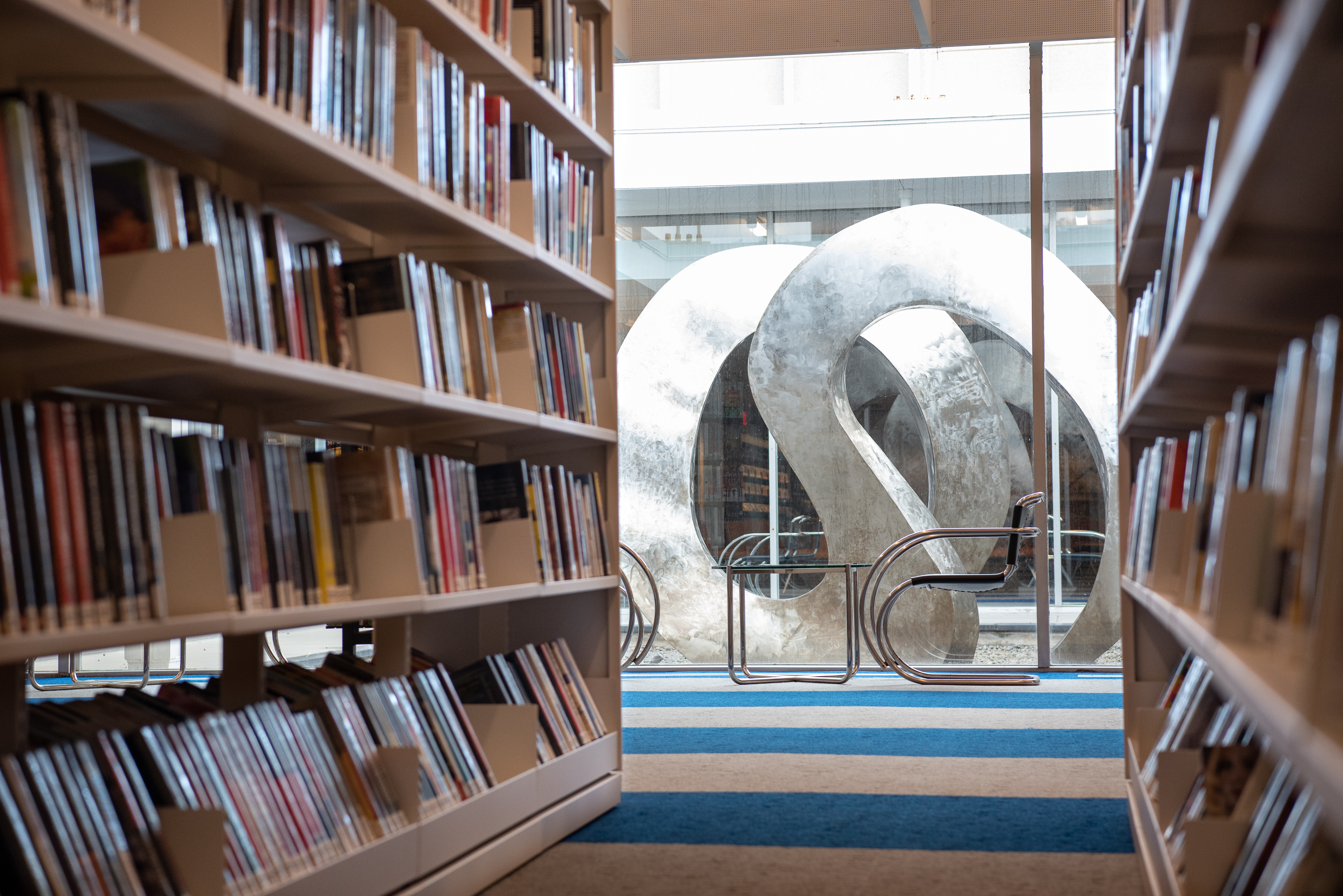Library Art: Swans
December 26, 2023

Swans is probably the most recognizable piece of art in the library, and as a 1,000-pound sculpture in the middle of the building, it’s difficult to miss. Designed specifically for the library, Swans sits in the water court on the first floor (it’s so big that it had to be lifted in by a crane when it was installed in 1979). The polished stainless steel is meant to reflect the light on the water, with the two huge loops depicting swimming swans.
Abstract Art
Of course, you wouldn't be alone if you didn’t realize what this sculpture portrays—or even that it’s meant to portray something specific. One of our favorite cases of mistaken identity is when someone said it resembled curly fries. The sculpture alludes to the graceful forms of swans rather than representing them literally, with the smooth, swooping lines reminding the viewer of the birds arching their necks.
Abstract sculptures were developed in the 1900s and pioneered by famous artists like Auguste Rodin, Henri Matisse, and Pablo Picasso. Another example that you might be familiar with is Chicago’s Cloud Gate, more commonly known as the Bean. In my opinion, Swans is particularly reminiscent of the work of Constantin Brancusi (1876-1957), an influential artist sometimes called the patriarch of modern sculpture. He often sculpted animals, but his art usually gestured at the shape and movement of that animal instead of being an accurate picture of what it looked like. His Bird in Space series was even involved in a 1926 court case over whether it could be legally considered art because of its abstraction. Luckily, we’re now well past that—our Swans are definitely art!

Sculptor Elliott Balter guides sculpture as it is lowered into the Water Court
Making Headlines
Since Swans was designed just for our library, it won’t be a surprise that the artist was local and very involved in Skokie’s artistic scene. Elliott Balter moved to Skokie in 1963 and was the head of the art department at Niles North High School until his retirement. He served on Skokie’s Fine Arts Commission from 1969 to 1973, and again from 1980 to 1983, and he was chairman from 1971 to 1972. He helped found the Skokie Sculpture Park Committee, which eventually became Skokie Northshore Sculpture Park. This group organized the creation of the park that now runs along McCormick Boulevard and the north channel of the Chicago River.
Balter wanted to put Skokie on the map artistically, envisioning people traveling great distances to see world-class works displayed in places like the sculpture park. His talent and ambitions made him a prominent local figure, but those same ambitions, and his strong opinions about how his goals should be achieved, also caused controversy. He was removed from the Fine Arts Commission and the Skokie Sculpture Park Committee, with newspaper coverage from the time describing fights over spending and how art should be chosen. He compared his dreams for Skokie to Florence, Italy, during the Renaissance, but he also described Skokie as a “plastic bubble—all glitter and no substance.” Despite his influence in the inception of the sculpture park, none of his sculptures currently stand in the park.
Balter’s desire for perfection resulted in another dramatic news story, this one more directly connected to Swans. When the sculpture was being installed, he was adding some finishing touches when he fell off a ladder and crushed a vertebra in his back. He blamed stress about a teachers’ strike he was participating in at Niles North as the cause of the accident. Artists put so much work and dedication into creating their art, and we hope that such injuries are very rare!

Skokie and Public Art
Although there are no Balter pieces in the sculpture park, many of his other works still stand in the garden outside the house where he lived. While he originally started putting his art there to make more space in his studio, it became a sculpture park in its own right, with the public wandering through and occasionally ringing his doorbell to give compliments or ask questions. According to a sign outside, visitors are still welcome, and if you look in the backyard, you’ll even see a smaller version of Swans, probably one of four models he made before starting on the large version for the library.
We are very grateful to our community that we even have Swans at the library. When the Board of Library Trustees decided to commission the sculpture, the library planned to hold a fundraiser in August 1978 to raise funds for the commission. Instead, local businesses and organizations donated the full amount. As always, Skokie, thank you for your amazing support.
.png)